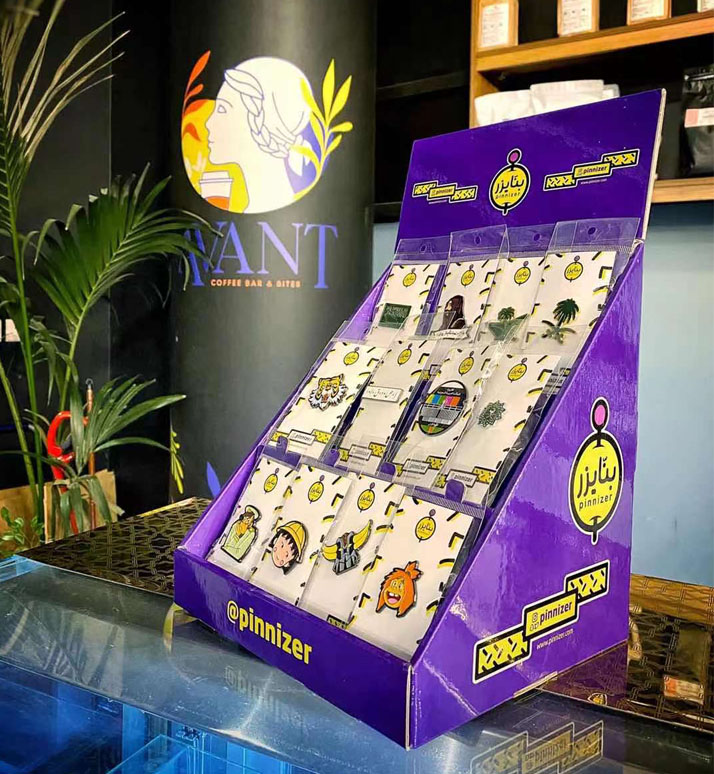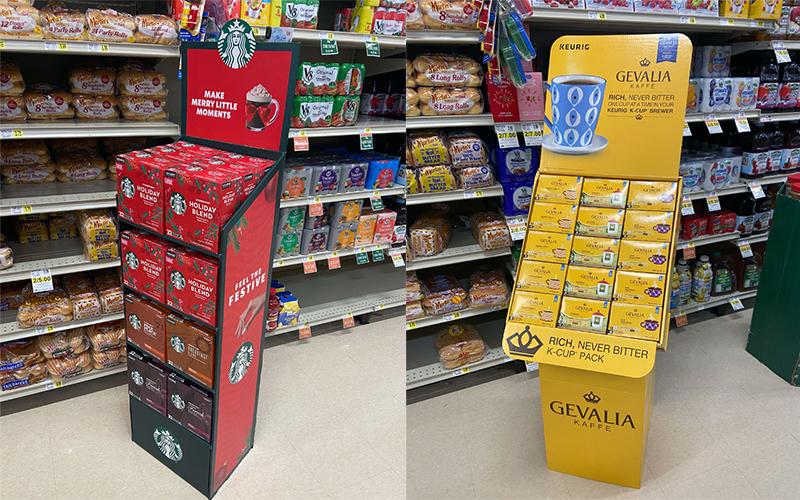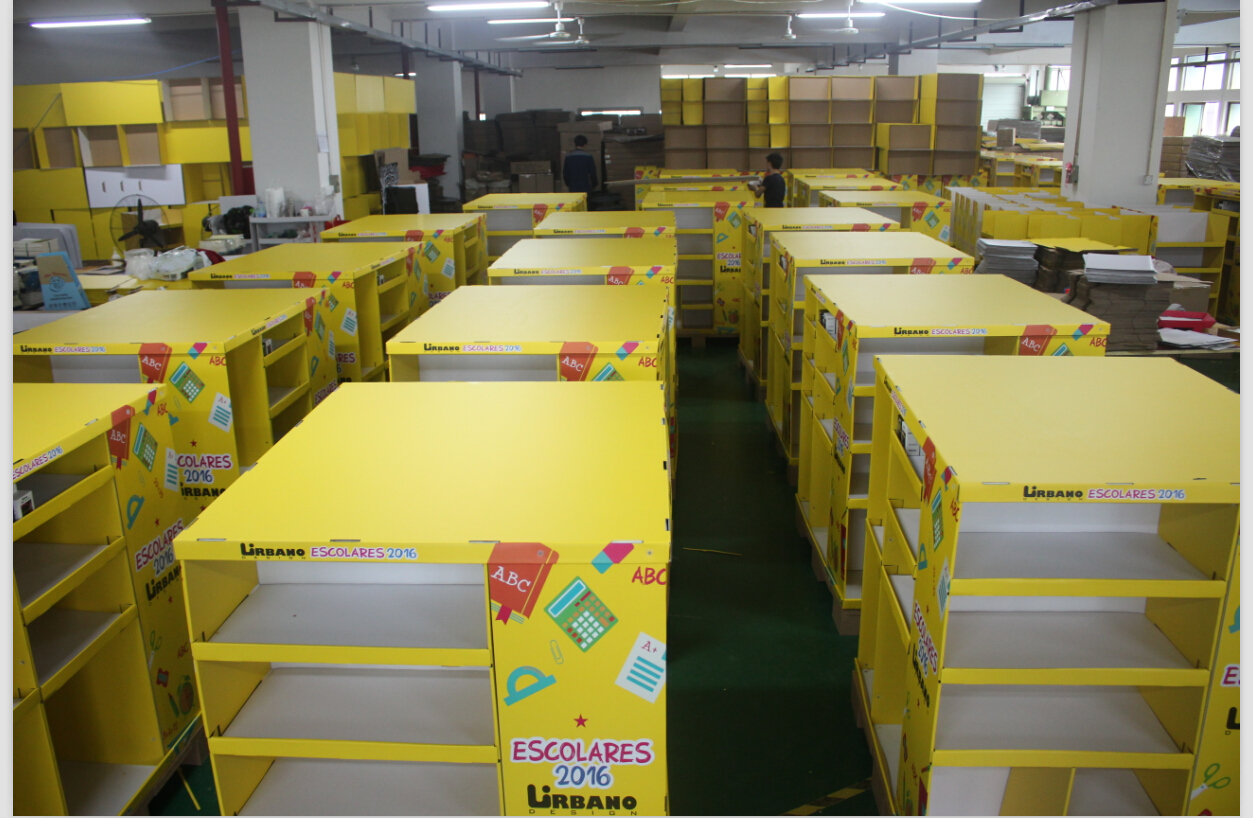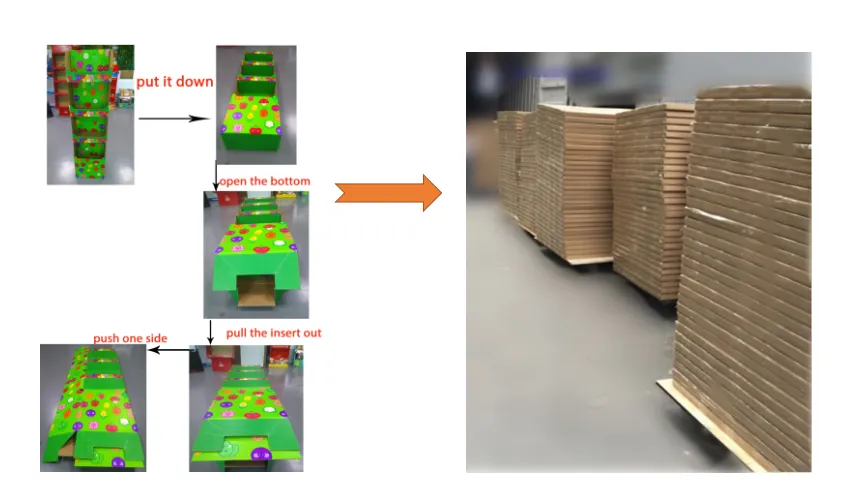Choosing the right display partner is a huge challenge. A wrong move can cost you money and damage your brand's image. The secret is finding a provider who masters the details.
A top-tier custom floor display provider stands out by delivering innovative, easy-to-assemble designs, perfect brand color matching through advanced technology, and exceptionally secure international shipping. They ensure your displays are not only effective in-store but also arrive safely and ready for action, protecting your investment.
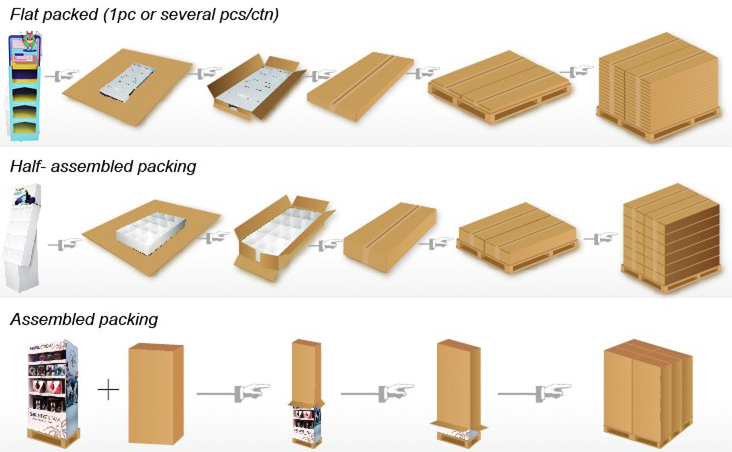
This sounds simple, but what does it actually mean for your project? The difference between a good provider and a great one lies in their approach to a few critical areas. It's about more than just a pretty design; it’s about a seamless process from the first sketch to the final placement on the store floor. Let's dig into what you should really be looking for.
What are the key features of a good display?
Your display sits in a crowded store, easily getting lost. This means you lose sales and your brand looks weak. You need to build your display with key features that demand attention.
A good display is attractive, strong, and easy to build. It must clearly communicate your brand's message. It has to be practical for the store environment while showing off your product to increase sales.

Dive Deeper
Over my 16 years in this business, I've seen that success comes down to a perfect balance between looks and strength. A display can be beautiful, but if it falls apart, it's useless. It can be strong, but if it’s ugly, it won’t sell a single product. Finding that middle ground is the real art. It starts with the visual design.
Visual Appeal and Brand Alignment
First, the display must catch the eye. But more importantly, it has to feel like your brand. Color is a huge part of this. I’ve seen clients get frustrated when their displays arrive and the color is just slightly off. It makes the entire product presentation look cheap. That’s why we invested in an advanced color management system. It ensures we can match your brand’s colors perfectly, every single time. It's not just about looking good; it's about protecting your brand's identity.
Structural Integrity and Easy Assembly
Next, it has to be strong enough for a busy retail store. But it also has to be simple to put together. Here's a quick breakdown of what to look for:
| Feature | Why It Matters |
|---|---|
| Eye-Catching Graphics | Grabs customer attention from a distance. |
| Clear Brand Message | Tells customers who you are in seconds. |
| Structural Soundness | Holds your product securely without bending or breaking. |
| Easy Assembly | Ensures it gets set up correctly and quickly in-store. |
Every one of these features is important. A weakness in one area can undermine the entire display.
Who sets up store displays?
You've sent your complex displays to stores nationwide. But the store staff is busy and they struggle to build them, leaving them in the backroom. The solution is designing displays for a simple, foolproof setup1.
Store displays are usually set up by store employees, dedicated brand merchandisers, or a third-party installation team. Because you never know who will do it, designing for fast and easy assembly2 is critical for success.
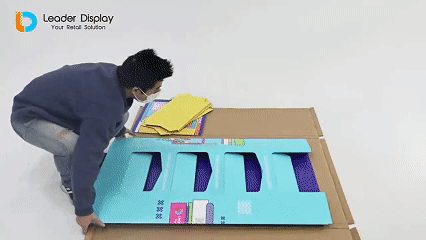
Dive Deeper
The reality of a retail environment is chaos. Store employees have a thousand things to do, and building a complicated display is low on their list. They don't have special tools or a lot of time. If your display comes with confusing instructions3 and dozens of parts, there's a good chance it will be assembled wrong, or not at all.
The Hidden Cost of Complexity
I learned this lesson the hard way early in my career. A client called me, completely frustrated. They had invested thousands in beautiful, custom displays. But when they visited the stores, they found most of them either half-built or still in the box in the stockroom. The assembly took 30 minutes, and the store staff just gave up. All that money was wasted. That experience was a wake-up call for me. It wasn't enough to design a display that looked good in our office; it had to work in the real world.
My Solution: The 2-Second Display
This problem pushed my team and me to innovate. We dedicated ourselves to creating display structures that were incredibly simple to set up. We wanted to eliminate the risk of human error4 and save our clients from worrying about execution. After a lot of work, we developed several pop-up designs5. Some of our floor displays can now be fully assembled in just two seconds. You just take it out of the box and it pops into its final shape. This is a game-changer. It saves on labor costs and makes sure the product gets on the sales floor looking exactly how the designer intended.
How to make a good display?
Having an idea for a display is the easy part. Turning that idea into a functional tool that actually sells your product is much harder. You need to follow a proven process.
Making a good display means understanding your customer, designing for the store, choosing the right materials, and focusing on clear branding. It requires a close, collaborative partnership6 between you and your display provider.

Dive Deeper
A successful display doesn't happen by accident. It's the result of a careful, step-by-step process. A great provider will guide you through this process, making sure every detail is perfect. For me, "making a good display" includes making sure it survives the journey to the store.
Step 1: Design and Prototyping
It all starts with your goals. Who are you trying to reach? What is the core message? We take that information and create initial designs and 3D renderings. Then, we make a physical prototype. This lets you touch and feel the display, test its strength, and see how your product fits. This step is crucial for catching problems before we produce thousands of units.
Step 2: Perfecting the Visuals
Once the structure is approved, we focus on making it look perfect. This brings us back to color. As I mentioned, a brand's color is its signature. A slight mismatch can cheapen the perception of your product. Using a precise color management system7 isn't a bonus feature; it's essential. It ensures the final printed color is an exact match for your brand's official colors.
Step 3: Ensuring Safe Delivery
The job isn't done when the display is printed. A display is no good if it arrives damaged. This is especially true for my clients shipping overseas. We treat shipping safety8 as part of the design process. Our expertise in secure packaging is a key part of what makes our displays "good."
How many forms of sales display are there?
You need a new display, but you feel overwhelmed by all the options. Choosing the wrong type can waste your budget and valuable floor space. You should understand the basic forms and their uses.
Sales displays come in many forms, mainly floor displays, counter displays, pallet displays, and endcaps. The best option for you depends on your product, the store, your budget, and even shipping logistics9.

Dive Deeper
Choosing the right format is the first step. But after 16 years in this business, I know that the format you choose has a huge impact on something many people forget: shipping. Getting your display to the store safely is just as important as the design itself. This is especially true when shipping internationally.
Common Display Formats and Shipping
Let's look at how the display type affects shipping. A small, flat-packed counter display is pretty simple to ship. But a large, pre-assembled floor display requires a completely different strategy. That’s where a provider's experience really shows. We have specific procedures for each type. For example, all our shipments undergo waterproof testing to protect them from moisture on a long sea voyage. We’ve also designed special protective inserts for shipping assembled displays, so they arrive without a scratch. Another big decision is whether to palletize the shipment. It adds protection but also cost. We help clients weigh these options to find the best solution.
Here’s a quick guide:
| Display Type | Best For | Key Shipping Consideration |
|---|---|---|
| Floor Display | Promoting new products in aisles. | Requires strong packaging, palletizing10 is often best. |
| Counter Display | Small, impulse-buy items at checkout. | Can be shipped flat-packed to save space and cost. |
| Pallet Display | High-volume products, shipped pre-stocked. | Needs protective wrapping and pre-assembly support. |
| Endcap Display | High-visibility placement at the end of aisles. | Must be very durable for high-traffic areas. |
Thinking about shipping from the very beginning is what separates a smooth product launch from a logistical nightmare.
Conclusion
In the end, a standout provider shines with easy-to-build designs, perfect color accuracy, and secure shipping. These details guarantee your display investment11 delivers maximum impact and drives real sales results.
-
Explore how a simple setup can enhance efficiency and reduce errors in display assembly. ↩
-
Learn why quick assembly is crucial for retail success and how it impacts sales. ↩
-
Understand the pitfalls of complex instructions and how they can hinder display effectiveness. ↩
-
Discover strategies to reduce human error and ensure displays are set up correctly. ↩
-
Find out how pop-up designs can revolutionize display assembly and save time. ↩
-
Explore the benefits of collaboration between designers and providers for successful displays. ↩
-
Understand the significance of color accuracy in enhancing brand perception. ↩
-
Discover essential shipping safety practices to protect your displays during transit. ↩
-
Learn how logistics play a crucial role in the success of retail displays. ↩
-
Explore the benefits and drawbacks of palletizing to make informed shipping decisions. ↩
-
Find out how to ensure your display investment yields the best possible returns. ↩



